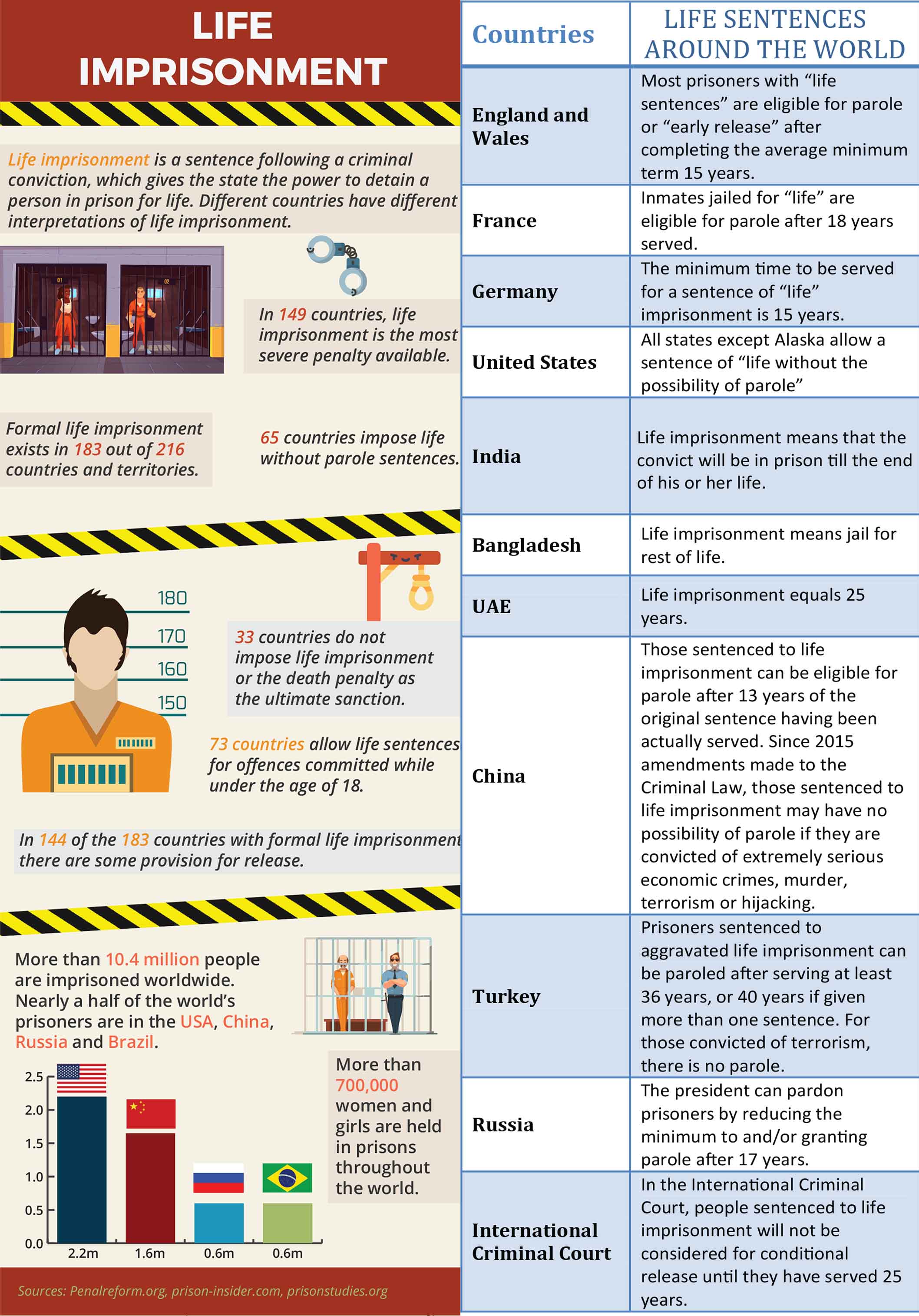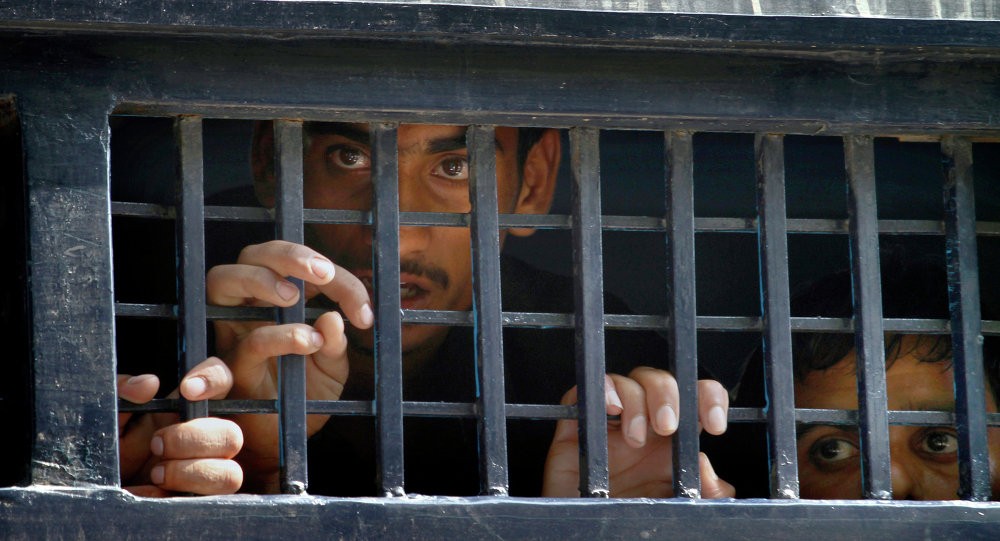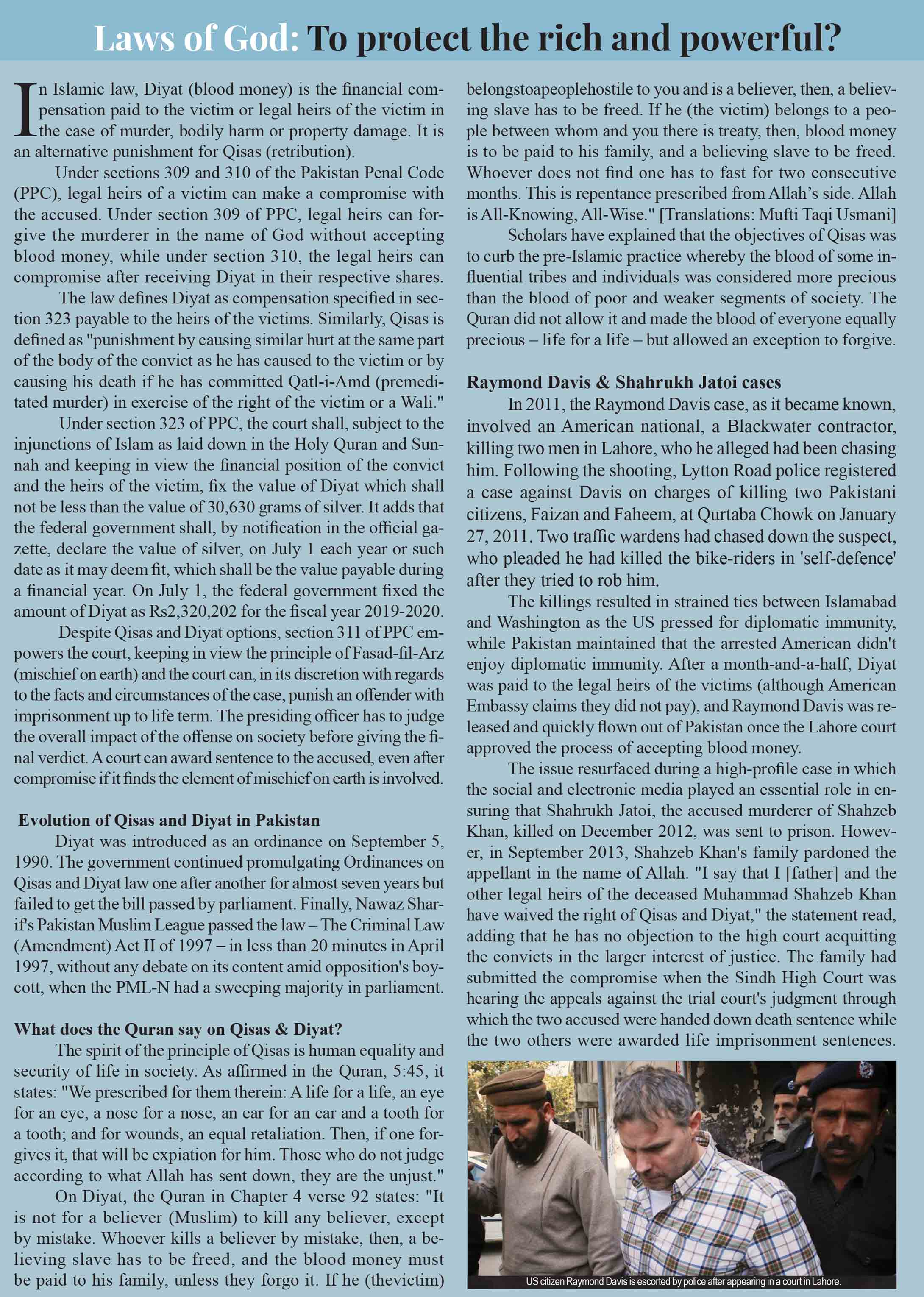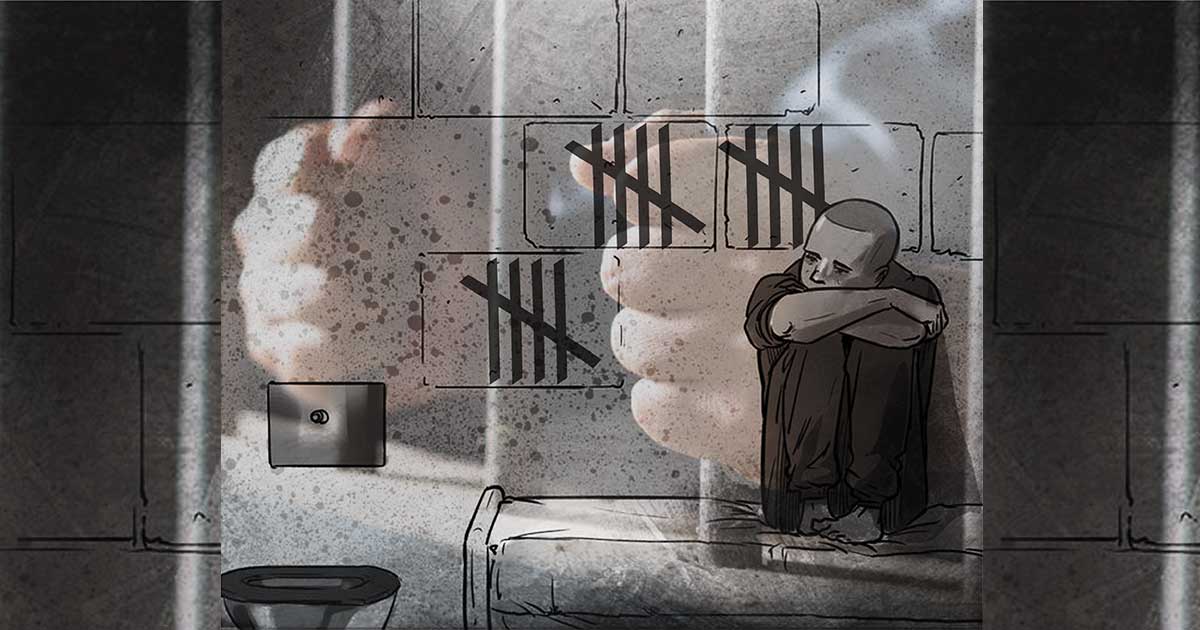Punishment and purpose of punishment are two different notions. H.L.A. Hart — a renowned jurist and distinguished legal philosopher — contextualized punishment in five distinct ways: pain or unpleasant consequences; punishment must be for a specific offence, the offender must be the actual one and punishment must be administered, and imposed by some defined authority (state).
This definition clearly hints towards the retributive purpose of punishment. There are justifications for culprits’ rehabilitation along with prevention & obturation in case of recurrence of crime through additional punishment – the concept of “deterrence” through punishment. However, human vengeance remains the principal reason which urges people to knock the door of courts i.e., to seek justice and revenge.
This retribution purpose outweighs all other objects of punishment. Surely, what could be a more significant relief to the affected citizens than to see the culprit suffering and in pain like he inflicted on victims? In Pakistan, ten kinds of punishments are provided under the penal code, and one of them is life imprisonment.
The question about life imprisonment comes in Haroonul Rashid’s case, which is still pending adjudication before the full-bench; Haroon was sentenced to life imprisonment 12 times in 12 different cases of murder and has been in jail since 2007.
Death is the severe most punishment for which the courts, in Pakistan, adopt stringent criteria in the assessment and appreciation of evidence brought before them by the prosecution. Even the slightest deviation from that criteria often compels the court to convert a possible death sentence into life imprisonment.
Given the fact that most, if not almost all, judgments of life imprisonment flow from cases tried under section 302 of Pakistan Penal Code where “capital punishment” was a distinct possibility and “life imprisonment” was adopted as a lesser punishment then the question: what is the duration of life imprisonment becomes most important. So, what then is life imprisonment?
The top judge of the Supreme Court of Pakistan also raised this question and formed a full bench to determine the answer. The question about life imprisonment comes in Haroonul Rashid’s case, which is still pending adjudication before the full-bench; Haroon was sentenced to life imprisonment 12 times in 12 different cases of murder and has been in jail since 2007.
Read more: Should Life Imprisonment really be life long?
“Is it not a misconception that a life sentence spans over 25 years,” the chief justice asked. (Dawn News July 29, 2019) The Pakistan Penal Code, 1860 (after this referred to as code) answers under section 57 that “in calculating fractions of terms of punishment, imprisonment for life shall be reckoned as equivalent to imprisonment for 25 years.” Courts in Pakistan have, therefore, considered that life imprisonment means imprisonment for maximum of 25 years.
However, in reality, this is not true; it originally meant “imprisonment for the whole of the remaining of convicted person’s natural life”. Above and beyond, this section thus requires interpretation. Interpretation in law is a rational process through which we understand the text. In law, semantic interpretation is not the purpose; instead, legal interpretation is the destiny. And this often creates a problem for a layman in understanding the law.
Therefore, it is the job of the courts to interpret; they turn the semantic linguistic understandings into legal norms—thus, they distinguish between these two understandings of the law. So, the question: what is the duration of life imprisonment in Pakistan, also cannot be answered semantically by referring to section 57 of the code. Unfortunately, many inlay public follow a literal approach in its interpretation, and not the purposive, historical and origin-based approach.
Ambiguity in Pakistani law on life imprisonment
In resolution to this proposition, two sister jurisdictions need to be examined: Pakistan and India. The reason is simple; both states’ laws have a common origin in English common law and their shared history of judicature under the British. To begin with Pakistan; so far, the question has not been answered by the superior courts in clear & unequivocal terms.
For instance, in Zargul’s case of 1989, the Supreme Court of Pakistan reckoned the duration as 25 years in toto. Likewise, in Dilawar Hussain vs. State case of 2013, while referring to section 57 of the code, the Supreme Court held that the term ‘life imprisonment’ means 25 years imprisonment.
The courts in Pakistan, in their reasoning, refer to rule 140 of the Pakistan Prison Rules, 1978, which provides that “imprisonment for life will mean 25 years rigorous imprisonment and every life prisoner shall undergo a minimum of 15 years substantive imprisonment…”.

After that, the case will be referred to the provincial government for consideration of remission, suspension, and commutation of sentence under section 401 of the Code of Criminal Procedure, 1898 (hereinafter referred to as Cr.P.C.). Thus, here the current concept is that, if after spending 15 years behind bars, the convict is not released on remission or commutation of sentence under section 401 Cr.P.C. read with Prison rules, then he will have to wait till the completion of 25 years in toto for liberation.
However, in Abdul Malik vs. the State (Supreme Court of Pakistan, 2006) it was strongly argued that “life imprisonment under code means incarceration for the entire life and the remission granted by the provincial government on the strength of rules cannot offset the mandate of substantive law i.e., code”.
Read more: The Evolution of Civil Services in Pakistan
But the court, although accepted that the term ‘life imprisonment’ has not been defined explicitly in the code, did not consider this question at length and ambiguously answered it. In the case, however, the Supreme Court referred to English case law “R v Foy of 1962” wherein it was held that: “life imprisonment means imprisonment for life and no doubt many people come out while they are still alive, but, when they do come out, it is only on license, and the sentence of life imprisonment remains on them until they die”.
Despite the reference, the court did not define it unequivocally. Moreover, the British court further clarifies the concept in these words: “if a prisoner is released in terms of Prison Rules… the said prisoner is in fact under an order of release (which, in Pakistan, is granted under section 401 Cr.P.C. read with Prison Rules) and the sentence of imprisonment for entire life continues”.
Life imprisonment in India
In India, unlike Pakistan, the duration of life imprisonment is well reckoned and clearly established. Indian courts have derived their reasoning from section 45 of code which defines life as denoting “the life of a human being…” and have also relied on section 401 of the Cr.P.C. wherein the term of sentence spanning the life of the convict, can be curtailed by the appropriate government for good and valid reasons in exercise of its powers.
The mother judgment in India — which is still being followed — is Gopal Vinayak Godse vs. State of Maharashtra of 1961. In this case, “a writ petition was filed for an order in the nature of Habeas Corpus claiming that the petitioner therein has justly served his sentence and should, therefore, be released forthwith.
Among other questions, the main question considered by the Constitution Bench was whether there is any provision of law whereunder a sentence for life imprisonment, without any formal remission by appropriate Government, can be automatically treated as one for a definite period? The Indian Constitution Bench, in an answer to the above question, categorically said “No”.
Read more: Progress achieved by Pakistan in counter terrorism
In this regard, the court elegantly followed the history-based approach and in its interpretation and while referring towards the history of life imprisonment in India, explained that section 57 of the Indian Penal Code.
Note that it is similar in Pakistan Penal code, and the wording “imprisonment for life shall be reckoned as equivalent to imprisonment for 25 years” does not say that imprisonment for life shall be deemed to be imprisonment for 25 years (read twenty in case of India) for all purposes, rather “imprisonment for life must prima facie be treated as imprisonment for the whole of the remaining period of the convicted person’s natural life”.
Therefore, in interpreting section 57 of the code, one must not forget the definition of life provided by section 45 of the code which provides that “the word ‘life’ denotes the life of a human being…” and if one reads these two sections together, one will surely come to the conclusion that it ordinarily means imprisonment for the full span of life. However, here one may naturally argue that what about the rule which provides that “imprisonment for life will mean 25 years”.

The Indian Supreme Court gives the answer in Ashok Kumar’s case of 1991, wherein it held that “remission rules have a limited scope and in the case of a convict undergoing the sentence of imprisonment for life it acquires significance only if the sentence is commuted or remitted”. (In case of Pakistan, it will be subject to section 401 of the Cr.P.C. or subject to the president’s power under article 45 of the constitution of Islamic Republic of Pakistan, 1973) Likewise, the judgment (Gopal Vinayak Godse vs. State of Maharashtra of 1961) was followed in Maru Ram vs. Union of India of 1981.
The Indian Supreme Court, while referring to Godse’s case, held that “release would follow only upon an order under section 401 of the Cr.P.C. by the appropriate Government or on a clemency order in exercise of power under the Constitution”. And further explained that “ordinarily where a sentence is for a definite term, the calculus of remissions may benefit the prisoner to instant release at that point where the subtraction result is zero”.
Read more: Brutality against Pakistani Children Continues: Is there a solution?
While referring life imprisonment, the court expressed that “where the sentence is indeterminate or of uncertain duration, the result of subtraction from an uncertain quantity is still an uncertain quantity and release of the prisoner cannot follow except on some fiction of quantification of a sentence of uncertain duration”.
Thus, the ratio decidendi of these cases is that where a person is sentenced to imprisonment for life, the question of duration can only arise if an order is passed under section 401 Cr.P.C. If in case, there is no order passed by the provincial government or by the president under his constitutional power, then imprisonment for life would mean, as per Godse’s rule, imprisonment for the remainder of life.
Furthermore, one may ask the question: whether there is any provision in Pakistan penal code for automatically considering life imprisonment for a definite period? The answer is “No”. The Godse’s case, in India, concluded that the order of the appropriate Government under Section 401 of the Cr.P.C. is a pre-requisite for release.
In Ratan Singh’s case of 1976, the Indian Supreme court further amply clarified it in the following words: “It is, therefore, manifest from the decision of this Court [in Godse] that the Rules framed under the Prisons Act or under the Jail Manual do not affect the total period which the prisoner has to suffer but merely amount to administrative instructions regarding the various remissions to be given to the prisoner from time to time in accordance with the rules.
Read more: Woman Gravely Injured by Husband & Brother in Law Upon Refusal to Make Tea
This Court further pointed out that the question of remission of the entire sentence or a part of it lies within the exclusive domain of the appropriate Government under Section 401 of the Code of Criminal Procedure and neither Section 57 of the Indian Penal Code nor any Rules or local Acts can stultify the effect of the sentence of life imprisonment given by the court under the Indian Penal Code.
In other words, this Court has clearly held that a sentence for life would ensure till the lifetime of the accused as it is not possible to fix a particular period of the prisoner’s death and remissions given under the Rules could not be regarded as a substitute [of a lesser sentence] for a sentence of imprisonment for life”.
Therefore, from these unambiguous decisions, it should now be clear that automatic benefit earned under section 401 of Cr.P.C. is limited to the extent of definite imprisonment, not indefinite confinement, whereas the detention for life is indefinite in its duration. It means the automatic release (after earning remissions and benefits under Pakistan Prison Rules or Jail Manual) on completion of 25 years behind bars would be available to a convict if he is sentenced to a fixed term of imprisonment for 25 years.
In this case, the remission period, granted by the government under section 401, is then offset against the total duration of detention, and if he has undergone the requisite period of incarceration, then his release will become automatic. On the other hand, if he is sentenced to imprisonment for life, then he will be in custody for an indeterminate period.
Therefore, remissions earned by or awarded to such a life convict, under Prison Rules, are only notional. In his case, to reduce the period of incarceration, a specific order under Section 401 of the Cr.P.C. will have to be passed by the appropriate Government. Moreover, in Pakistan, the reduced period cannot be less than 15 years. As we seek clarity, it has to be kept in mind that the imprisonment provided by section 302 of the Pakistan Penal Code is death or life imprisonment.
Read more: What Does a Life Sentence Mean? Definitely not 25 Years
Often the cases tried are of pre-mediated murder or because of sudden provocation; in many cases, when culprits are awarded imprisonment for life, it is clearly the lesser punishment as strict criteria for a death sentence are not met.
As per the precedent-based discussion, to enjoy the benefit of section 401 Cr.P.C., of remission, suspension, or commutation of the sentence, and in consequence to come out of the prison, such a convict (facing life imprisonment on most serious of charges – often murder) requires the order of the appropriate government which will be granted by considering and following the prison rules.
In other words “remission can be granted under Section 401 of the Cr.P.C. in the case of a definite term of sentence”, and “if the term of sentence is indefinite (as in life imprisonment), the power under Section 401 of the Cr.P.C. can certainly be exercised but not merely on the basis that life imprisonment is an arbitrary or notional figure of 25 years of imprisonment”.
USA & UK legislation on life imprisonment
To look for the answer for this embroilment, one can briefly refer to the American and English criminal legislation regarding life imprisonment. In America, the laws, concerning life imprisonment, divide life sentences between determinate life sentences and indeterminate life sentences.
As an instance, sentenced to 15 years to life, or 25 years to life, which means a minimum sentence 15 or 25 years have to be served by the convict in custody, after that, he will be eligible for parole. Or the sentence to life without parole— that in fact, a sentence to incarceration till death — which we can understand here in Pakistan as a sentence without any remission.
Moreover, in some states, convicts often sentenced to more than a normal man’s life, like Bobby Bostic, who is from St Louis, Missouri, in the American Midwest, sentenced in 1997 to 241 years in prison (BBC news 2018). Apparently, it seems weird, but practically, it is possible in some states of America.
As some jurisdictions provide life imprisonment without parole, and some allowed consecutive imprisonments. In the case titled the United States vs Gillette of 2013, the court held that: “even when the penalty is not ‘life’, the punishment for a defendant can be a number of years that exceeds the human lifespan.

For instance, in a case involving charges, as a sex offender and sexual contact with minors, a defendant received the following consecutive prison terms: 15 years for each of nine counts and ten years for each of two counts, for a total of 155 years”. Moreover, each state has legislated guidelines for the trial courts in determining the question of how, when, and under what circumstances the life sentence should be with parole and without parole.
In so far, as per Times magazine’s report, in America, until 2017, more than 50,000 prisoners were serving the life sentence without parole. Unlike America, consecutive life imprisonment is prohibited in Pakistan’s legislation. Here, under section 35 of Cr.P.C. imprisonment through consecutive sentences cannot be awarded for more than 14 years in one trial.
This question comes in case of Aurangzeb vs. state before Lahore High Court in 2011 wherein the trial court order to run the sentences consecutively which amounted to 150 years, but the High Court set-aside it and convert it into the concurrent sentence of 25 years of life while relying on section 57 of penal code. In England, the total period for which the lifer may remain in prison can either be determined by the sentencing court or the Home Office.
Through the Criminal Justice Act 2003, specific new provisions have been enacted to revamp the sentencing system. As an instance, under section 224, the person aged 18 or above convicted for ‘specified offence’ (it includes the offence of terrorism and sexual offence) can be punished for imprisonment for life.
Read more: Child Rapist Awarded Death Penalty in Lahore
However, with regards to the life sentence section 269 of chapter 7 of the Act, 2003 is the most important. Under this section, the court is duty-bound to specify, through its order of sentencing, the period after which the case can be considered for ‘early release’. Furthermore, under sub-section (4) it provides that, if the offender was 21 or over when he committed the offence and the court is of the opinion that, because of the seriousness of the offence, or of the combination of the offence and one or more offences associated with it, no order should be made for ‘early release’ the court must order that the early release provisions are not to apply to the offender.
It is known as ‘whole life order’. It means, in this case, the convict will remain incarcerated till his death, subject to the powers provided to the Home Office and Court of Appeals. In this regard, schedule 21 of the Act, 2003 provides the guidelines for the determination of minimum term concerning life sentence.
The guideline number 4(1) provides that if: “(a) the court considers that the seriousness of the offence (or the combination of the offence and one or more offences associated with it) is exceptionally high, and (b) the offender was aged 21, or over when he committed the offence, the appropriate starting point is a whole life order”.
Unfortunately, no such guidelines — as are available in American and English legislation — are available in Pakistan for criminal administration of justice. It is high time for the legislators to wake up and do not let the grass grow anymore under their feet — amend the legislation, and provide unequivocal parameters to determine the term of life imprisonment in Pakistan.
Hafiz Muhammad Azeem is an advocate of the high court. He holds an LL.M. from the Punjab University and teaches law at Punjab Law College. He writes research-based articles on various topics and can be reached at khokhar.azeem@yahoo. com. His articles can be accessed on hmazeem.blospot.com.
The views expressed in this article are the author’s own and do not necessarily reflect the editorial policy of Global Village Space.


